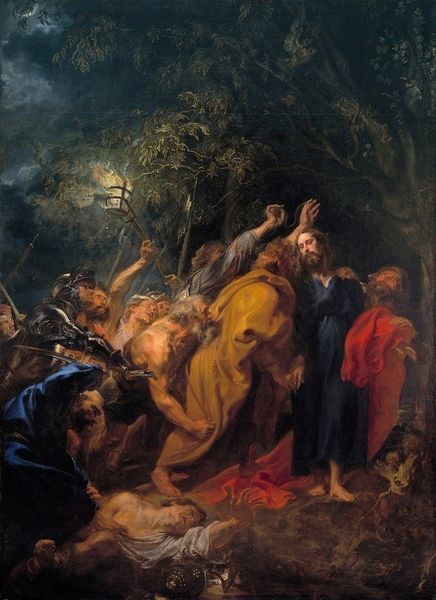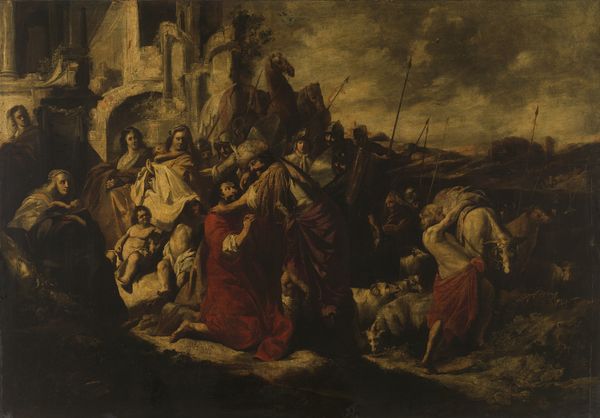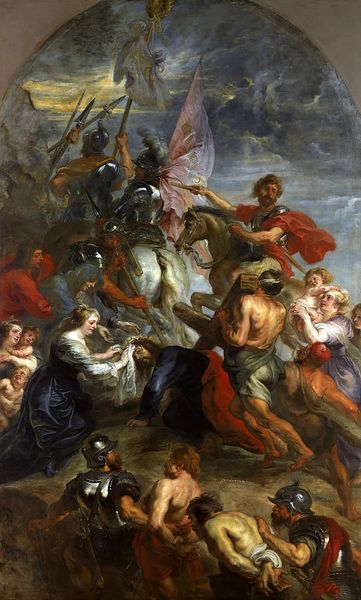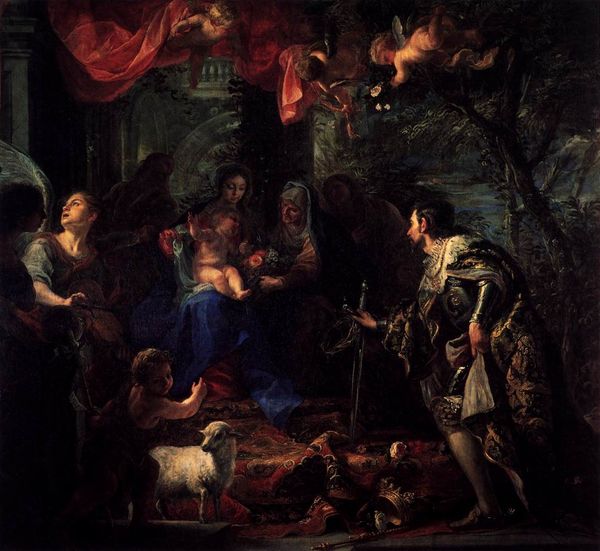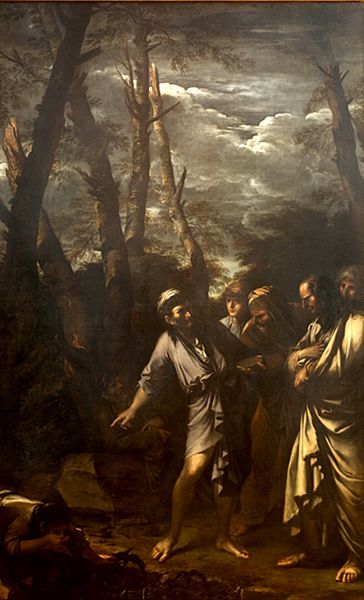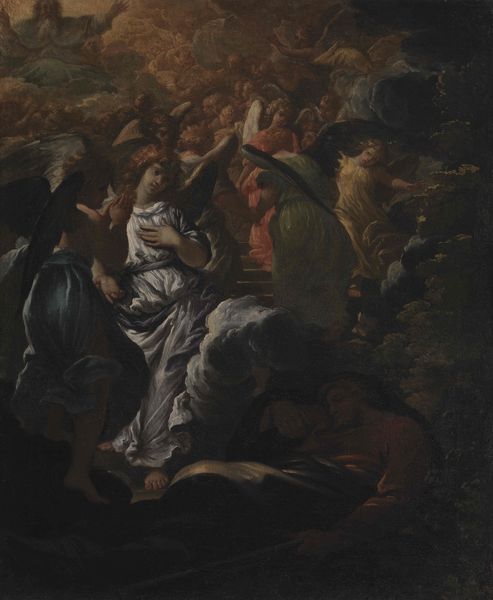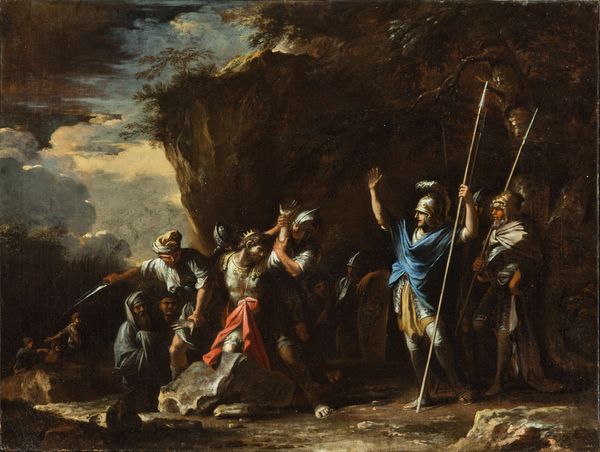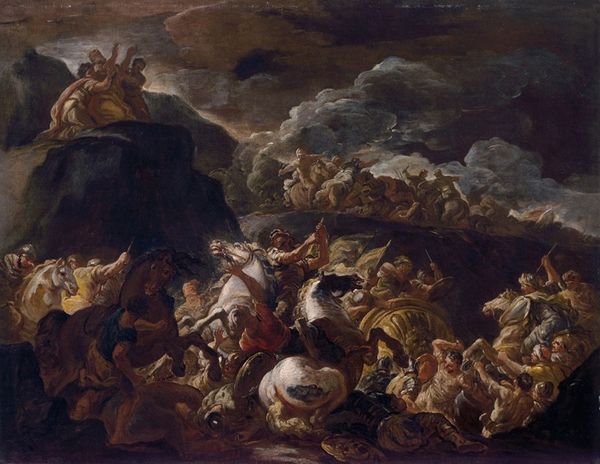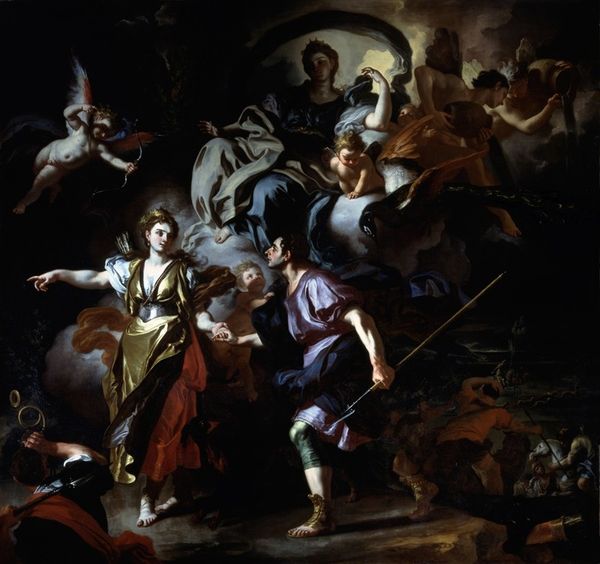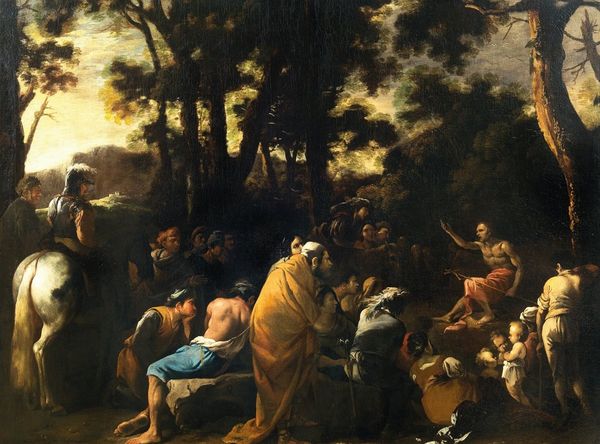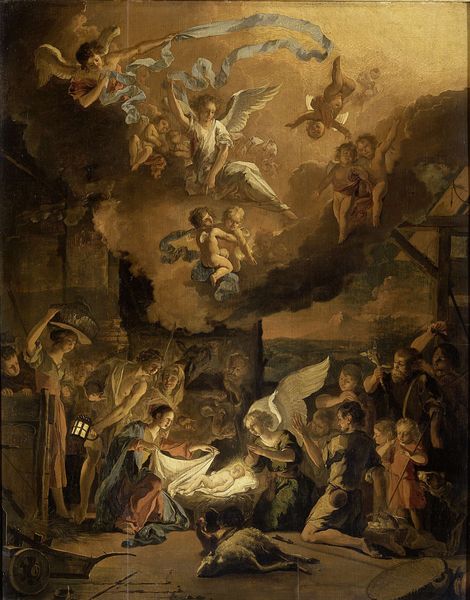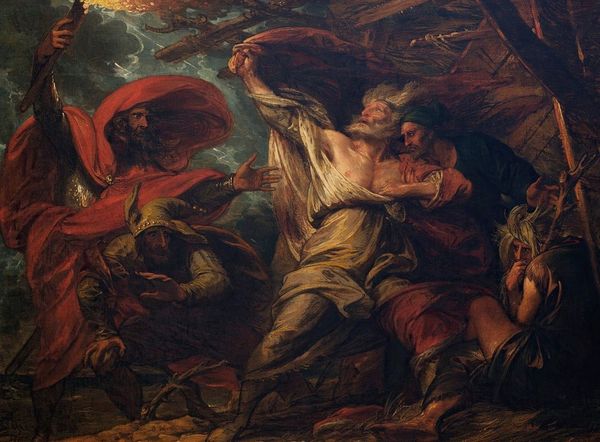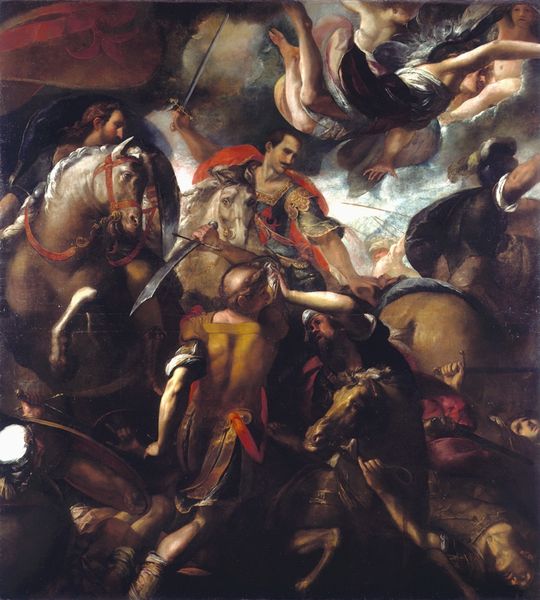
painting, oil-paint
#
narrative-art
#
baroque
#
painting
#
oil-paint
#
figuration
#
oil painting
#
history-painting
Copyright: Public Domain: Artvee
Curator: This painting captures a pivotal scene, Anthony van Dyck’s "The Betrayal of Christ," rendered in oil around 1618-1620. The artwork presents Christ's arrest, a deeply fraught moment laden with implications of injustice and sacrifice. What is your first reaction to the painting's visuals? Editor: The sheer density of the composition overwhelms me. The emotional charge is undeniably amplified by that compressed feeling, an aggressive crowding in of figures all illuminated by the crude, upward-thrusting lantern light. It is claustrophobic, visceral, and really underscores the mob mentality on display. Curator: Exactly. Van Dyck uses this light source masterfully. Consider the placement of the lantern: a symbol in itself, reflecting the search for truth and how that pursuit can be manipulated. Light and darkness are powerful archetypes here, extending the image’s resonance far beyond just one historical instance of capture. Editor: Indeed, the manipulation is so present. Note the positioning of Judas—the actual kiss obscured, pushed off to the side—yet the frenzy of the crowd is prioritized, obscuring culpability. It points to how crowds so easily abandon the call for individual moral action. It almost renders the kiss irrelevant, as a symbol, which raises issues about complicity, doesn’t it? Curator: Absolutely. Judas embodies a complicated, shifting symbolism here, becoming almost allegorical of moral failing within larger socio-political contexts. Van Dyck pulls from established iconographic visual devices to create a complex image around sin and its consequences. See, for example, how he positions Christ in a cool, composed detachment that opposes all the earthly chaos. Editor: I'm especially struck by the social and political ramifications in a time of such significant social upheaval in Europe. Van Dyck painted this during a time of considerable social upheaval; the Protestant Reformation, constant dynastic power struggles... seeing how betrayals enacted upon both Christ in the painting, and also upon everyday populations by power structures and state-sponsored authority became so interlinked. The violence implied, but not overtly shown, really carries across still. Curator: So we find in "The Betrayal," an intricate narrative about trust, faith, betrayal, and perhaps even the blurred lines of morality under the scrutiny of power dynamics. It speaks volumes, doesn’t it? Editor: More than volumes; it raises fundamental questions about social organization that continue to persist today.
Comments
No comments
Be the first to comment and join the conversation on the ultimate creative platform.
